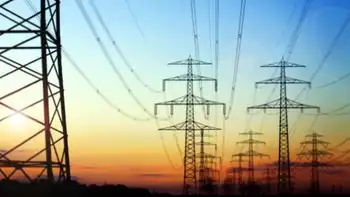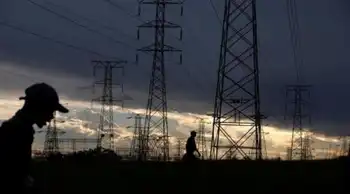Leningrad reactor 3 receives extension to 2025
The 15-year extension was awarded by Russia's regulatory authority Rostechnadzor after Rosenergoatom agreed to enhance the security and safety system of the reactor and bring it in line with the Rostechnadzor's operating guidelines for nuclear power. Earlier, the first and second reactors at the Leningrad nuclear site received operating license extensions until 2019 and 2022, respectively. License extension for the fourth reactor is also in progress.
The Leningrad nuclear power plant, at Sosnovy Bor in Leningrad Oblost, consists of four units of 1,000-MW Reaktor Bolshoy Moshchnosti Kalaniy (RBMK) reactors. These reactors were built between 1974 and 1981. The design of the reactors is similar to the units that were destroyed at Chernobyl in 1986. After the disaster, the RBMK reactors in the former Soviet Union were redesigned. Upgrades included overall refurbishment of the nuclear reactor and replacement of fuel channels in the core.
However, the European Union was dissatisfied with the augmentation and directed the closure of two RBMKs at Lithuania's Ignalina nuclear power station. The first unit was closed in 2004, while the second reactor is due to be shut down by the end of 2009.
There have been several accidents in the RBMK reactors at the Leningrad nuclear complex. In 1975, partial meltdown in the first reactor led to leakage of toxic effluents into the atmosphere. In 1992, iodine and other radioactive gases leaked from the damaged fuel channels. In 2005, there was loss of life when a smelting facility at the site exploded. In 2009, there were media reports of a hole in the discharge pump header unit.
Russia is expected to gradually phase out the RBMK reactors at Leningrad. In 2008, there were 12 RBMK reactors operating in Russia and Lithuania. Experts state that there are no future plans to build new reactors based on the RBMK technology. The technology is obsolete and there is growing pressure from international agencies to shut down the RBMK reactors.
Russia is building another nuclear power complex close to the site of the Leningrad nuclear power plant. Construction activity commenced in 2008 and is expected to be completed by 2016.
The first phase will consist of two units of AES-2006 pressurized water reactors (PWRs). The AES-2006 PWRs have a lifespan of 50 years and are 35% more fuel efficient in comparison to the reactors currently used at the site. The estimated cost of building two AES-2006 PWR units is about $5.8 billion. The first unit will be commissioned by 2013, while the second unit is expected to achieve criticality by 2016.
Earlier, Russia had set 2014 as the commissioning date for the second reactor. However, the commissioning date was pushed back by two years due to slump in power demand and the economic slowdown. The reactors at the new site are likely to be used as reference for future construction activity at the Tianwan nuclear power plant in China.
Presently, this nuclear station operates older versions of VVER-1000 reactors.
According to the World Nuclear Association, there are about 436 nuclear reactors operating in 30 countries, with combined installed generating capacity of 372,000 MW. Russia has 31 operating nuclear power plants producing 21,743 MW of electricity.
Related News

Opinion: The awesome, revolutionary electric-car revolution that doesn't actually exist
TORONTO - Something strange happened at the Ecofiscal Commission recently. Earlier this month, the carbon-tax advocacy group featured on its website as one of its advisers the renowned Canadian economist (and FP Comment columnist) Jack M. Mintz. The other day, suddenly and without fanfare, Mintz was gone from the website, and the commission’s advisory board.
Advisers come and advisers go, of course, but it turns out there was an impetus for Mintz’s departure. The Ecofiscal Commission in its latest report, dropped just before Canada Day, seemingly shifted from its position that carbon prices were so excellent at mimicking market forces…





